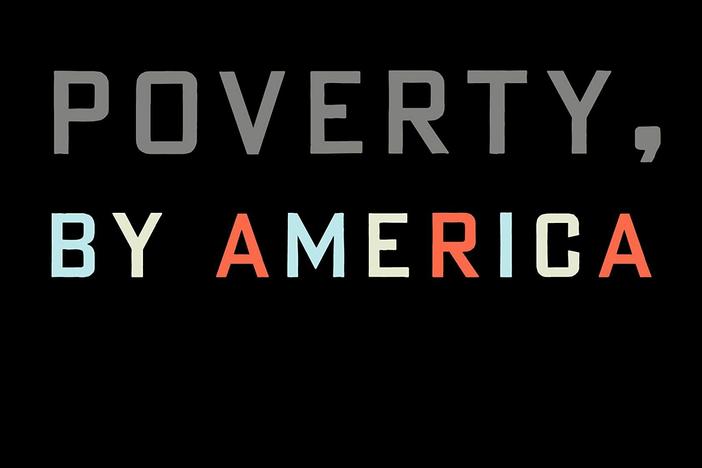Section Branding
Header Content
'Misfire' is a scathing look at nepotism, fraud and corruption in the NRA
Primary Content
The National Rifle Association — once one of the most well-known and influential lobbying organizations in the country — is a wounded beast.
Tim Mak's Misfire: Inside the Downfall of the NRA might be the final blow in terms of exposing the organization's rotten core and showing how a boundless love for money and power — as well as nepotism, fraud, and corruption — have been eating away at the NRA's foundations for a long time.
The history of the NRA and its transition from an institution formed in 1871 that taught soldiers marksmanship, to a far-right political group that strategizes a defense as soon as a school shooting happens — and has deep links to Russia — is long and complicated. But Mak, an investigative reporter for NPR, has crafted an engaging, meticulously researched chronicle of this history that is as immersive as it is shocking. Using more than 100 interviews with NRA staff and insiders, newspaper and magazine articles, leaked documents, speeches, emails, depositions, and court documents, Mak follows the NRA and two of its main figures: CEO and Executive Vice President Wayne LaPierre and LaPierre's wife Susan, who has wielded almost as much power and influence. He tracks how they, along with many others, shifted the organization's trajectory with a series of bad decisions, crimes, and an emphasis on making, and spending, a lot of money.
There is no single event that brought the NRA to its knees, according to Mak. Instead, years of embezzlement, internal turmoil, clashing egos, weak leadership, and a culture of abuse that lead to a high turnover and many unhappy ex-staffers willing to air out the group's dirty laundry coalesced into the perfect storm. Furthermore, a growing pro-gun control movement, endless school shootings throwing the NRA into a media maelstrom, and being exposed as a Russian asset (and the subsequent media frenzy over the NRA's relationship with Russian foreign agent Maria Butina) all contributed to the organization's rupture. Mak, who spent years reporting in things like the Russia connection, explores each of these elements with clear prose and a blitzkrieg of damning evidence.
The main problem at the heart of Misfire is that while the NRA is seen by its members as "an identity, a way of living, a secular religion," the upper echelons of the association care little about the things its members hold dear. Wayne LaPierre, for example, isn't a fan of guns, doesn't like hunting, hates controversy, and has always been known for vanishing when things get rough. What he cares about — or what Susan LaPierre and all the millionaires he hangs out with have taught him to care about — Mak writes, are designer suits, private planes, illegal contracts, cronyism, and spending money, of which he makes a lot at the NRA:
"Wayne's salary jumped from $200,000 in the mid-1990s to $2.2 million in 2018. Of the more than six hundred nonprofit organizations tracked by CharityWatch, Wayne is the fifth-highest-paid nonprofit leader in the country. If you exclude healthcare nonprofits, Wayne is the second-highest paid. And that's without counting the perks the LaPierres afforded themselves along the way: from 2013 to 2017, he was reimbursed for $1.2 million in expenses, according to the NY AG."
Mak shows how external events affect the NRA's membership as much as internal mayhem does. The Obama administration, for example, was good for them because fear of gun regulation drove membership numbers up. Trump's win did the opposite. Similarly, school shootings have played a role, especially in the way outsiders perceive the NRA. However, despite all this, Misfire makes it obvious that the worst of what the NRA faces now comes from the inside:
"As the Parkland shootings reverberated across America's political landscape, further eroding the NRA's power and exacerbating Wayne's anxieties, the most urgent issue for the group was money. The foreseeable decrease in revenue during the Trump era had not been addressed, and every department within the organization resisted the cuts that Wayne sent Josh Powell to make. Meanwhile, the cost of NRATV continued to rise. The problem got so bad that by the end of 2018, the NRA struggled to pay staff salaries."
Besides being a weak leader, LaPierre has a long history of spending inordinate amounts of money in ways he would later have to defend — but couldn't, Mak writes. When confronted about charges made with an American Express card in his name during a trip to Italy, he "claimed not to know whether he had been issued a card" and then blamed hackers. Examples like this abound in the book. Mak writes that, now, the NRA is trying to survive the consequences of every abuse of power, every criminal they hired, and every secret they tried to keep. In August of 2020, New York Attorney General Letitia James filed a lawsuit against the NRA, "seeking to dissolve the organization entirely" and in January of 2021, the NRA filed for bankruptcy.
Despite all that, the NRA is still around and still powerful, which makes Misfire the equivalent of reading the autopsy of a zombie — one that reminds us the monster is falling apart but still here and still dangerous.
Gabino Iglesias is an author, book reviewer and professor living in Austin, Texas. Find him on Twitter at @Gabino_Iglesias.
Copyright 2021 NPR. To see more, visit https://www.npr.org.
Bottom Content





